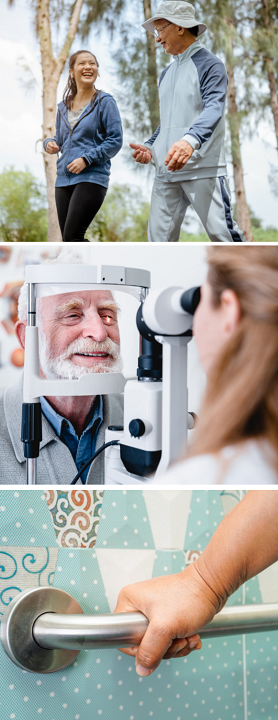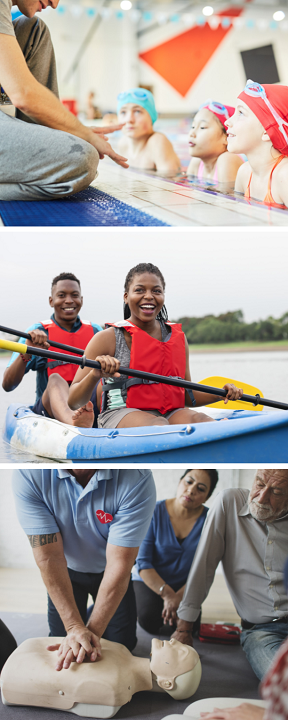Did you know that the main cause of death for people under 45 in Canada is traumatic injury?
And of the 750,000 injuries in British Columbia each year, 90 per cent are predictable and preventable?
The overall impact of traumatic injury is staggering. Statistics shared on the Trauma Services BC
fact sheet show that of the 750,000 British Columbians injured each year, almost 2,000 die, 9,000 suffer permanent disability, 35,000 are hospitalized and an estimated 70,000 potential years of life are lost.
The three leading causes of preventable traumatic injury in British Columbia are:
- Motor vehicle crashes
- Falls amongst seniors
- Drowning
Thinking ahead and having a plan can help prevent injuries.
Trauma Awareness Week runs from July 3 to 9 and provides an opportunity to share strategies for preventing traumatic injuries. Here are our tips for creating a plan of your own.
“Knowing that all motor vehicle crashes are preventable makes the high number of injuries and deaths in B.C. each year even more devastating,” says Dr. Michael Christian, Provincial Medical Director for
Trauma Services BC.
“Having a plan and thinking ahead is an easy first step. Keep a basic emergency kit in your vehicle, and be aware of your driving behaviour: avoid driving when you’re tired, leave your cell phone alone, and if you’re a passenger, don’t distract the driver.”
- Are you a distracted driver?
- Avoid driving when tired
- Leave your cell phone alone
- Do your grooming at home – not behind the wheel
Keep a
basic emergency kit in your trunk. Have items in it to be prepared for emergencies, stay warm and hydrated if you have to wait for help.
- Basic First Aid Kit with manual
- Flashlight with extra batteries, or hand-crank flashlight/radio
- Fire extinguisher - ABC type
- Booster cables
- Survival blanket, warm clothing
- Bottled water + non-perishable high energy foods
Learn more at
ICBC Road Safety and Justice Institute of BC
Road Safety at Work.
Is a senior in your life at risk of falling?
“We know that falls are the leading cause of injury for seniors in B.C., and can lead to hospitalization and loss of independence,” said Kelly Wilson, improvement consultant, Fall and Injury Prevention at Interior Health.
While the highest percentage of falls are caused by simply slipping, tripping and stumbling, the good news is that many falls are preventable.
“Older adults need to maintain their muscle strength and balance – this means spending less time sitting and more time moving, every day. We also recommend getting a pharmacist to check their medications, having their eyes checked each year, and taking steps to make their homes safer by clearing pathways, removing rugs, and adding railings, grab bars and non-slip mats.”
 Stay active. Seniors are less likely to fall if they have strong muscles and good balance. Encourage activities that improve balance and mobility.
Stay active. Seniors are less likely to fall if they have strong muscles and good balance. Encourage activities that improve balance and mobility.
Have their eyes checked once a year. Vision issues are a leading cause of falls. Eyes should be checked by an optometrist at least once a year.
Check medications. Ensure your loved one checks in with their doctor or pharmacist and lets them know if their medications are making them drowsy or dizzy.
Make their home safer.
- Have grip bars installed in the shower or bath.
- Use non-slip mats in the bathtub and on shower floors.
- Ensure rooms, halls and staircases are well lit.
- Wear shoes with good rubber soles inside and outside the house. Avoid going barefoot or wearing loose slippers.
You can learn more about how to prevent a fall at the
SeniorsBC website.
 Drowning can happen quickly and quietly. In B.C., the greatest number of drowning deaths occur among males. Among the survivors of near-drowning, 20 per cent sustain permanent brain damage.
Drowning can happen quickly and quietly. In B.C., the greatest number of drowning deaths occur among males. Among the survivors of near-drowning, 20 per cent sustain permanent brain damage.
Educate yourself and your family
- Enrol yourself and your child in swimming lessons. Taking 20-30 hours of lessons can give most children and adults basic swimming skills. That’s roughly two lessons a week, for six weeks.
- Learn CPR and/or lifesaving techniques.
Act responsibly
- Supervise children in and around water.
- Wear an approved personal flotation device or lifejacket on a boat, at the beach, or at the lake.
Learn more about how to prevent drowning at
Lifesaving Society BC,
Canadian Red Cross, and
Parachute Canada.
Trauma Services BC
fact sheet
BC Injury Research and Prevention Unit
The Community Against Preventable Injuries

